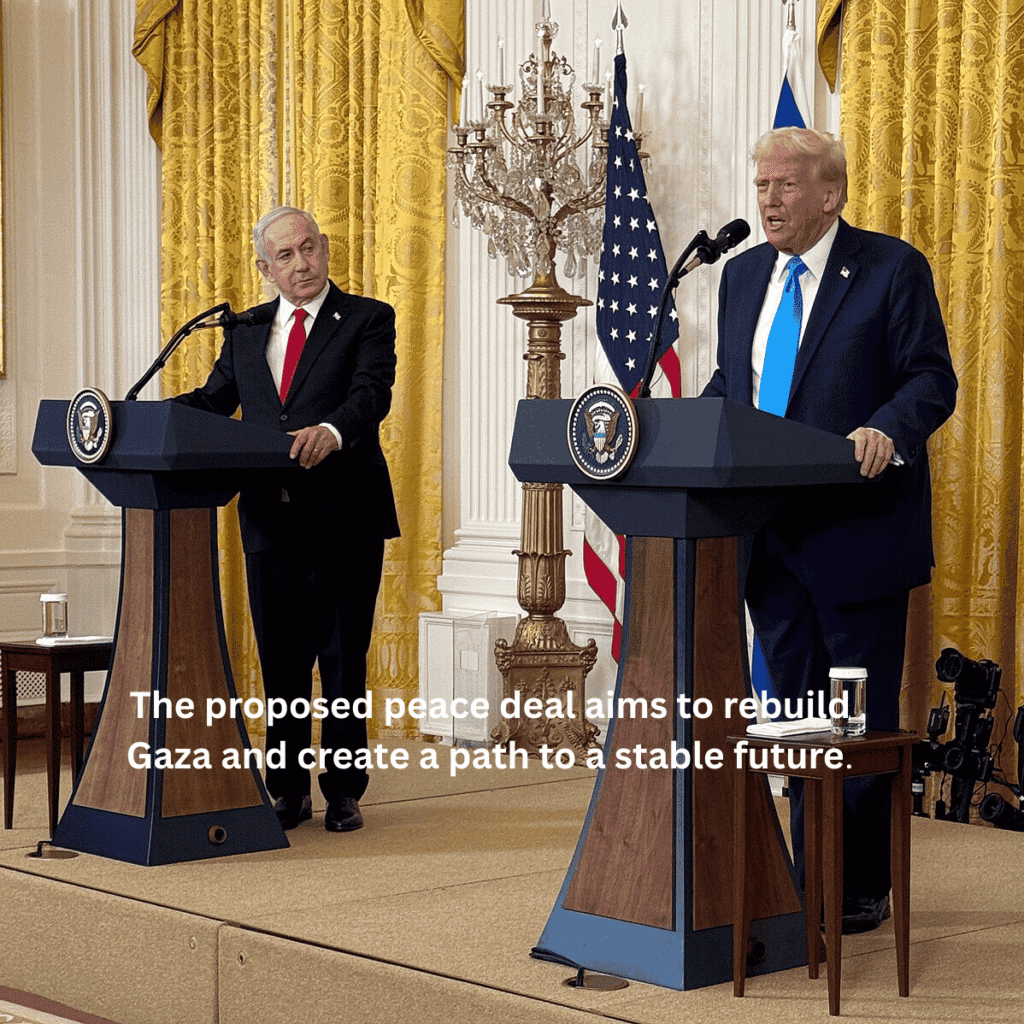
WASHINGTON, D.C. President Donald Trump and Israeli Prime Minister Benjamin Netanyahu announced on Monday, September 29, 2025, a new US-backed plan to end the ongoing conflict in Gaza. The 20-point proposal, presented to Hamas through mediators, details a path for an immediate ceasefire, the release of all hostages, and a new governance system for the territory
The meeting between the two leaders in Washington has been a major topic in global news. According to the plan, Israeli forces will not permanently occupy Gaza. Instead, the Israeli Defense Forces (IDF) will gradually withdraw as a new international stabilization force, supported by a new Palestinian police service, takes over. This part of the plan differs from previous statements by some hard-line members of Netanyahu’s coalition who wanted a long-term Israeli presence.
Watch Live: Prime Minister Benjamin Netanyahu and U.S. President @realDonaldTrump hold a joint press conference at the White House following their meeting 🇮🇱 🇺🇸https://t.co/3k5cVgCDpy
— Prime Minister of Israel (@IsraeliPM) September 29, 2025
The plan features several key components:
Hostage and Prisoner Exchange: Within 72 hours of Israel’s acceptance, all remaining hostages, whether alive or deceased, would be returned. In return, Israel would free a significant number of Palestinian prisoners.
Immediate Ceasefire: All military operations would stop immediately upon agreement, and battle lines would be frozen to allow for the staged withdrawal of Israeli forces.
New Governance for Gaza: The proposal calls for a temporary, non-political Palestinian committee to manage the daily affairs of Gaza. This committee would be overseen by a new international transitional body called the “Board of Peace,” which Trump has said he would chair.
Former UK Prime Minister Tony Blair is also being considered for a position. Economic Rebuilding: A major plan led by international experts would be introduced to rebuild and revitalize Gaza, creating jobs and opportunities.
While key allies, including the Palestinian Authority and several Arab and Islamic nations, have welcomed the plan, its success largely depends on Hamas’s acceptance. In a joint press conference, both Trump and Netanyahu warned the militant group. “If Hamas rejects the deal, then Israel will finish the job by itself,” Netanyahu stated. Trump added that Israel would have his “full backing” to take any necessary actions if the deal is rejected. This has been a hot topic in global media and on social networks.
The peace proposal signals a shift in priorities in the search for a lasting resolution to the conflict. It moves the focus from a solely military solution to a political and economic one. The plan also clearly states that no one will be forced to leave Gaza, and those who wish to return will be allowed to do so. This part of the proposal addresses the widespread fear of mass displacement among Palestinians.
As the international community watches with cautious optimism, the next move is up to Hamas. The outcome of this proposal will determine not only Gaza’s immediate future but could also pave the way for greater regional stability.
For more on the geopolitical landscape and its impact on India and other nations, visit the Latest News
section of our site. For a deeper dive into how international affairs shape global technology and cybersecurity, you can explore articles on Technology.



